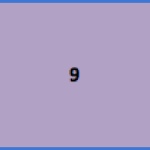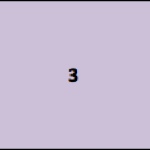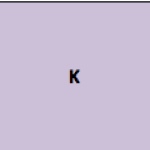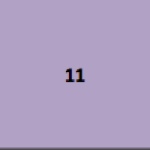Information
-
Audit Title
-
Document No.
-
Client / Site
-
Conducted on
-
Prepared by
-
Location
-
Personnel
Reading Literature
-
¥Cite strong and thorough textual evidence to support analysis of what the text says explicitly as well as inferences drawn from the text
-
¥Determine a theme or central idea of a text and analyze in detail its development over the course of the text, including how it emerges and is shaped and refined by specific details; provide an objective summary of the text
-
¥Analyze how complex characters develop over the course of a text, interact with other characters, and advance the plot or develop the theme
-
¥Determine the meaning of words and phrases as they are used in a text, including figurative and connotative meanings; analyze the impact of specific word choices on meaning and tone, including analogies or allusions to other texts
-
¥Analyze how an author's choices concerning how to structure a text, order events within it, and manipulate time create such effects as mystery, tension, or surprise
-
¥Analyze a particular point of view or cultural experience reflected in a work of literature from outside the U.S
-
¥Analyze the representation of a subject or a key scene in two different artistic mediums, including what is emphasized or absent in each treatment
-
¥Analyze how an author draws on and transforms source material in a specific work
Reading Informational Text
-
¥Cite strong and thorough textual evidence to support analysis of what the text syas explicitly as well as inferences drawn
-
¥Determine a central idea of a text and analyze its development including how it emerges and is shaped and refined by specific details; provide an objective summary
-
¥Analyze how the author unfolds an analysis or series of ideas or events, including the order in which the points are made, how they are introduced and developed, and the connections that are drawn between them
-
¥Determine the meaning of words and phrases as they are used ina text, including figurative, connotative, and technical meanings; analyze the cumulative impact of specific word choices on meaning and tone
-
¥Analyze in detail how an author's ideas or claims are developed and refined by particular sentences, paragraphs, or larger portions of a text
-
¥Determine an author's point of view or purpose in a text and analyze how an author uses rhetoric to advance that point of view or purpose
-
¥Analyze various accounts of a subject told in different mediums, determining which details are emphasized in each account
-
¥Delineate and evaluate the argument and specific claims in a text, assessing whether the reasoning is valid and the evidence is relevant and sufficient; identify false statements and fallacious reasoning
-
¥Analyze seminal U.S. documents of historical and literary significance, including how they address related themes and concepts
-
¥Read and comprehend literary nonfiction in the grades 9-10 text complexity band proficiently, with scaffolding as needed at the high end of the range
Writing
-
¥Write arguments to support claims in an analysis of substantive topics or texts, using valid reasoning and relevant and sufficient evidence
-
¥Write informative/explanatory texts to examine and convey complex ideas, concepts, and information clearly and accurately through the effective selection, organization, and analysis of content
-
¥Write narratives to develop real or imagined experiences or events using effective technique, relevant descriptive details, and well-structured event sequences
-
¥Use technology, including the internet, to produce and publish writing and present the relationships between information and ideas efficiently
-
¥Develop and strengthen writing as needed by planning, revising, editing, rewriting, or trying a new approach, focusing on addressing what is most significant for a specific purpose and audience
-
¥Produce clear and coherent writing in which the development and organization are appropriate to task, purpose, and audience
-
¥Conduct short as well as more sustained research projects to answer a question or solve a problem; narrow or broaden the injury when appropriate; synthesize multiple sources on the subject, demonstrating understanding of the subject under investigation
-
¥Gather relevant information from multiple authoritative print and digital sources, using advanced searches effectively; assess the usefulness of each source in answering the research question; integrate information into the text selectively to maintain the flow of ideas, avoiding plagiarism and following a standard format for citation
-
¥Draw evidence from literary or informational texts to support analysis, reflection, and research
-
¥Write routinely over extended time frames and shorter time frames for a range of discipline-specifics tasks, purposes, and audiences
Speaking and Listening
-
¥Initiate and participate effectively in a range of group discussions with diverse partners on grades 9-10 topics, texts, and issues, building on others' ideas and expressing their own clearly and persuasively
-
¥Integrate multiple sources of information presented in diverse media or formats evaluating the credibility and accuracy of each source
-
¥Evaluate a speaker's point of view, reasoning, and use of evidence and rhetoric, identifying any fallacious reasoning or exaggerated or distorted evidence
-
¥Present information, findings, and supporting evidence clearly, concisely, and logically such that listeners can follow the line of reasoning and the organization, development, substance, and style are appropriate to purpose, audience, and task
-
¥Make strategic use of digital media in presentations to enhance understanding of findings, reasoning, and evidence to add interest
-
¥Adapt speech to a variety of contexts and tasks, demonstrating command of formal English when indicated or appropriate
Language Standards
-
¥Initiate and participate effectively in a range of group discussions with diverse partners on grades 9-10 topics, texts, and issues, building on others' ideas and expressing their own clearly and persuasively
-
¥Integrate multiple sources of information presented in diverse media or formats evaluating the credibility and accuracy of each source
-
¥Evaluate a speaker's point of view, reasoning, and use of evidence and rhetoric, identifying any fallacious reasoning or exaggerated or distorted evidence
-
¥Present information, findings, and supporting evidence clearly, concisely, and logically such that listeners can follow the line of reasoning and the organization, development, substance, and style are appropriate to purpose, audience, and task
-
¥Make strategic use of digital media in presentations to enhance understanding of findings, reasoning, and evidence to add interest
-
¥Adapt speech to a variety of contexts and tasks, demonstrating command of formal English when indicated or appropriate










